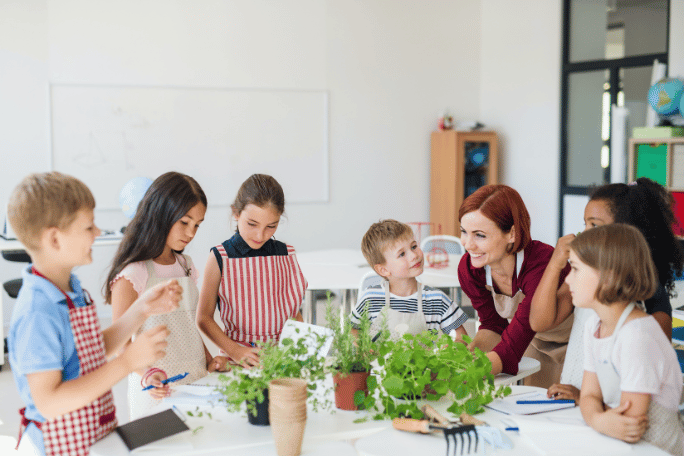Lesson summary
This lesson is designed for a flipped classroom, where students learn new content by watching a video in their own time. This strategy provides the opportunity for students to build their knowledge, attitudes and values by themselves, thereby freeing up class time for hands-on work.
Learning intentions:
Students will...
- recognise ways that science and art can be used in collaboration
- build their thinking and questioning skills.
Lesson guides and printables
Lesson details
Curriculum mapping
Australian Curriculum content descriptions:
Year 7 Science:
- Science knowledge can develop through collaboration and connecting ideas across the disciplines of science (ACSHE223)
Year 8 Science:
- People use understanding and skills from across the disciplines of science in their occupations (ACSHE227)
Year 9 Science:
- People can use scientific knowledge to evaluate whether they should accept claims, explanations or predictions (ACSHE160)
Year 10 Science:
- People can use scientific knowledge to evaluate whether they should accept claims, explanations or predictions (ACSHE194)
Year 7 & 8 Visual Arts:
- Analyse how artists use visual conventions in artworks (ACAVAR123)
- Identify and connect specific features and purposes of visual artworks from contemporary and past times to explore viewpoints and enrich their art-making, starting with Australian artworks including those of Aboriginal and Torres Strait Islander Peoples (ACAVAR124)
Year 9 & 10 Visual Arts:
- Evaluate how representations communicate artistic intentions in artworks they make and view to inform their future art making (ACAVAR130)
- Analyse a range of visual artworks from contemporary and past times to explore differing viewpoints and enrich their visual art-making, starting with Australian artworks, including those of Aboriginal and Torres Strait Islander Peoples, and consider international artworks (ACAVAR131)
General capabilities: Critical and creative thinking.
Syllabus Outcomes: SC4-17CW, SC4-13ES, SC5-13ES, SC5-13ES, VAS4.3, VAS4.7, VAS4.8, VAS4.9, VAS4.10, VAS5.7, VAS5.8, VAS5.9, VAS5.10.
Time needed: 30 minutes.
Level of teacher scaffolding: Low – allow students to explore the topic independently.
Resources required
- Internet
- Laptops and earphones
- Student Worksheet
Additional info
Artists used in this resource:


Welcome back!
Don't have an account yet?
Log in with:
By signing up to Cool.org you consent and agree to Cool's privacy policy to
store, manage and process your personal information. To read more, please see
our privacy policy here(Opens in new tab).
Create your free Cool.org account.
Many of our resources are free, with an option to upgrade to Cool+ for premium content.
Already have an account?
Sign up with:
By signing up to Cool.org you consent and agree to Cool's privacy policy to
store, manage and process your personal information. To read more, please see
our privacy policy here(Opens in new tab).